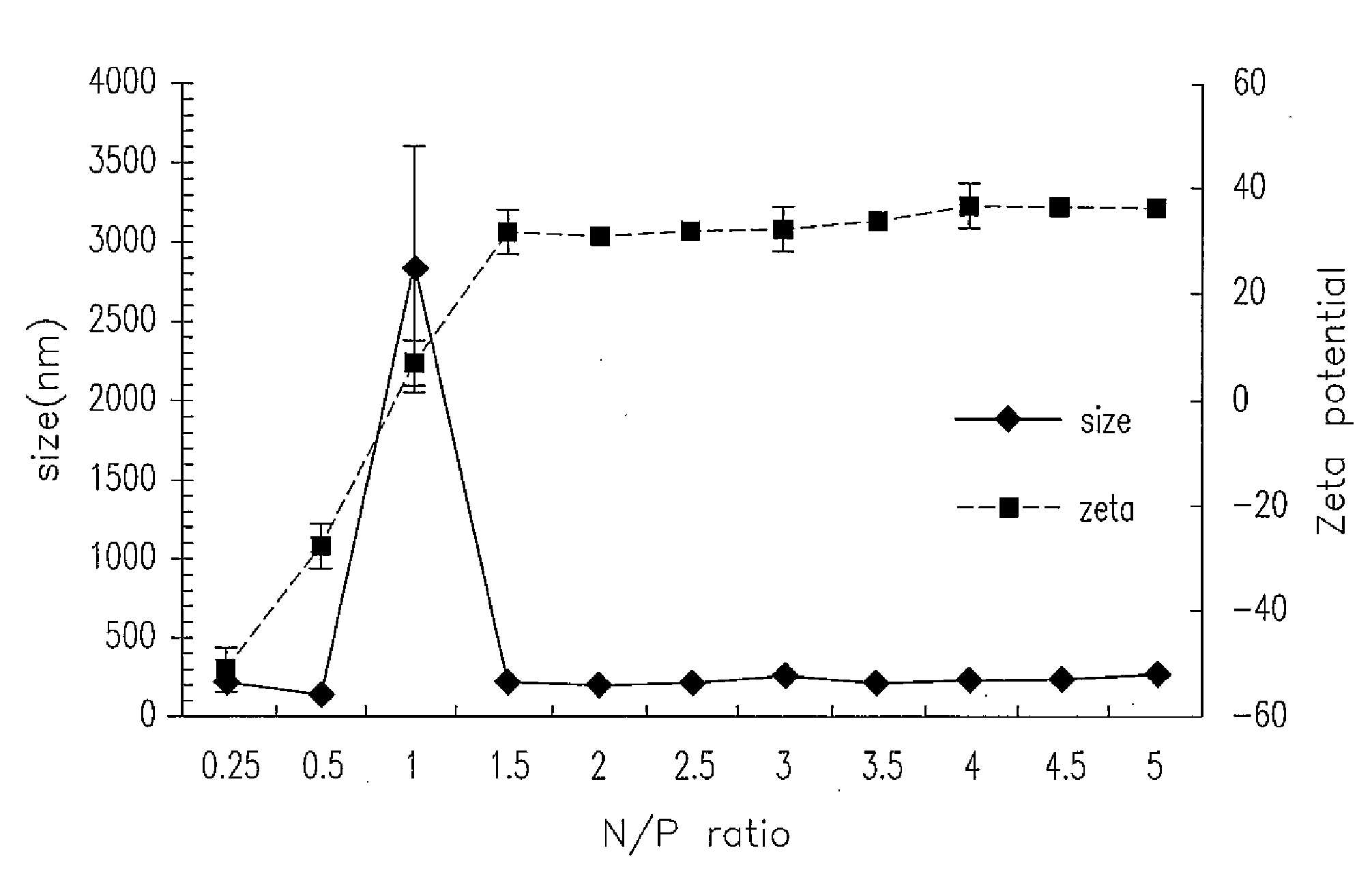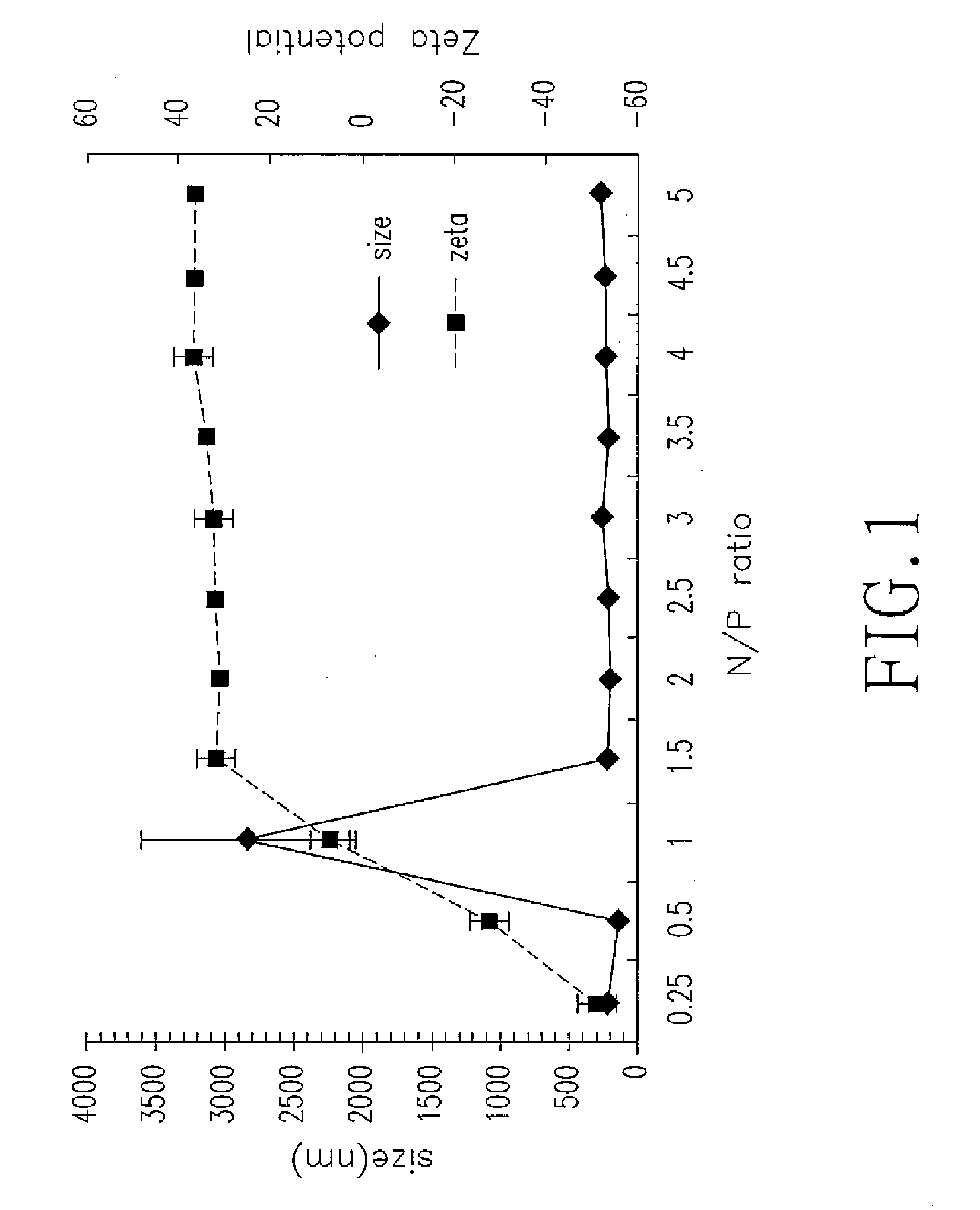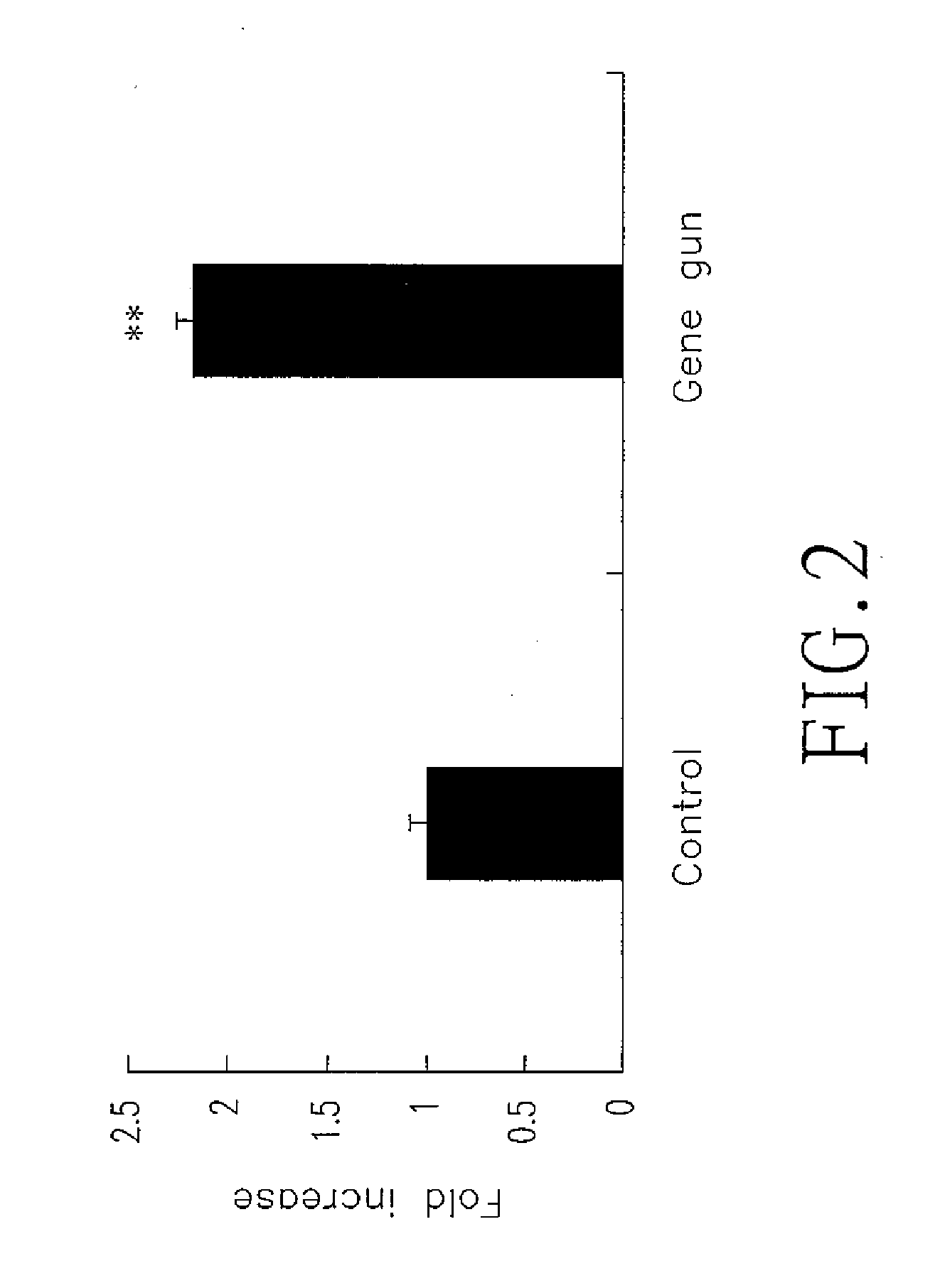Chitosan vehicle and method for making same
a technology of chitosan and vehicle, which is applied in the direction of capsule delivery, microcapsules, pharmaceutical delivery mechanisms, etc., can solve the problems of non-biodegradable gold particles used with a conventional gene gun, high cost of gene gun bombardment, and high cost of operation
- Summary
- Abstract
- Description
- Claims
- Application Information
AI Technical Summary
Benefits of technology
Problems solved by technology
Method used
Image
Examples
example 1
Immunization Against JEV by DNA Vaccine Transdermally Delivered with Low-Pressure Gene Gun
Preparation of Nanoparticles
[0048]With reference to FIG. 1, chitosan nanoparticles were produced by ionic gelation of the positively charged CS with the TPP. The particle size and zeta potential of nanoparticles prepared at varying N / P molar ratios are shown in FIG. 1. The CS:pCJ-3 / ME at distinct weight ratios formed complexes on the nanometer scale, with the exception of the weight ratio at 1.0:1.0. At this weight ratio, theoretical calculations demonstrated that the overall charge ratio (of the positively charged —NH3+ groups on CS to the negatively charged —PO4− groups on DNA) of the chitosan nanoparticles was approximately 1.0:1.0, thus resulting in aggregation. The diameters of the prepared chitosan nanoparticles were in the range of 150-270 nm with a negatively or positively charged zeta potential, depending on the relative concentrations of CS and DNA used. When the amount of negatively...
example 2
Immunization Against JEV by DNA Vaccine by Transcutaneous Delivery Using Skin Patch
Preparation of Chitosan Nanoparticles
[0053]Chitosan nanoparticles were produced by ionic gelation of the positively charged CS with the TPP. As shown in Table 1, CS: pCJ-3 / ME at distinct weight ratios formed complexes on the nanometer scale, with the exception of the weight ratio at 1.0:1.0. At this weight ratio, theoretical calculations demonstrated that the overall charge ratio (of the positively charged —NH3+ groups on CS to the negatively charged —PO4− groups on DNA) of the chitosan nanoparticles was approximately 1.0:1.0, thus resulting in aggregation. The diameters of the prepared chitosan nanoparticles were in the range of 150-270 nm with a negatively or positively charged zeta potential, depending on the relative concentrations of CS and DNA used. When the amount of negatively charged DNA sufficiently exceeded that of positively charged CS (CS:DNA ) 0.5:1.0), the chitosan nanoparticles formed ...
example 3
CS-Collagen Complexes Transdermally Delivered by a Low-Pressure Gene Gun and Transcutaneously Delivered by Skin Patch
Preparation of CS-Collagen Complexes
[0059]Chitosan nanoparticles were produced by ionic gelation of the positively charged CS with the TPP. A sample of Ig of collagen was dissolved in 10 mL deionized (DI) water (pH 6.0). The collagen solution was then diluted with DI water to make a 1 mg / mL collagen stock solution. The collagen stock solution (1 mL) was premixed with aqueous chitosan nanoparticles (50 μg / mL, 2 mL) under magnetic stirring at room temperature.
Cell Viability Studies
[0060]In order to estimate whether the preparation process of the particles would introduce any cytotoxicity, BHK-21 cells were treated with different concentrations of chitosan-collagen complexes and the cell viability was evaluated by MTS assay. FIG. 7 shows that no cytotoxicity effects were observed for the chitosan nanoparticle suspensions. A cell viability of around 80% was observed in al...
PUM
| Property | Measurement | Unit |
|---|---|---|
| molecular weight | aaaaa | aaaaa |
| molecular weight | aaaaa | aaaaa |
| diameter | aaaaa | aaaaa |
Abstract
Description
Claims
Application Information
 Login to View More
Login to View More - R&D
- Intellectual Property
- Life Sciences
- Materials
- Tech Scout
- Unparalleled Data Quality
- Higher Quality Content
- 60% Fewer Hallucinations
Browse by: Latest US Patents, China's latest patents, Technical Efficacy Thesaurus, Application Domain, Technology Topic, Popular Technical Reports.
© 2025 PatSnap. All rights reserved.Legal|Privacy policy|Modern Slavery Act Transparency Statement|Sitemap|About US| Contact US: help@patsnap.com



